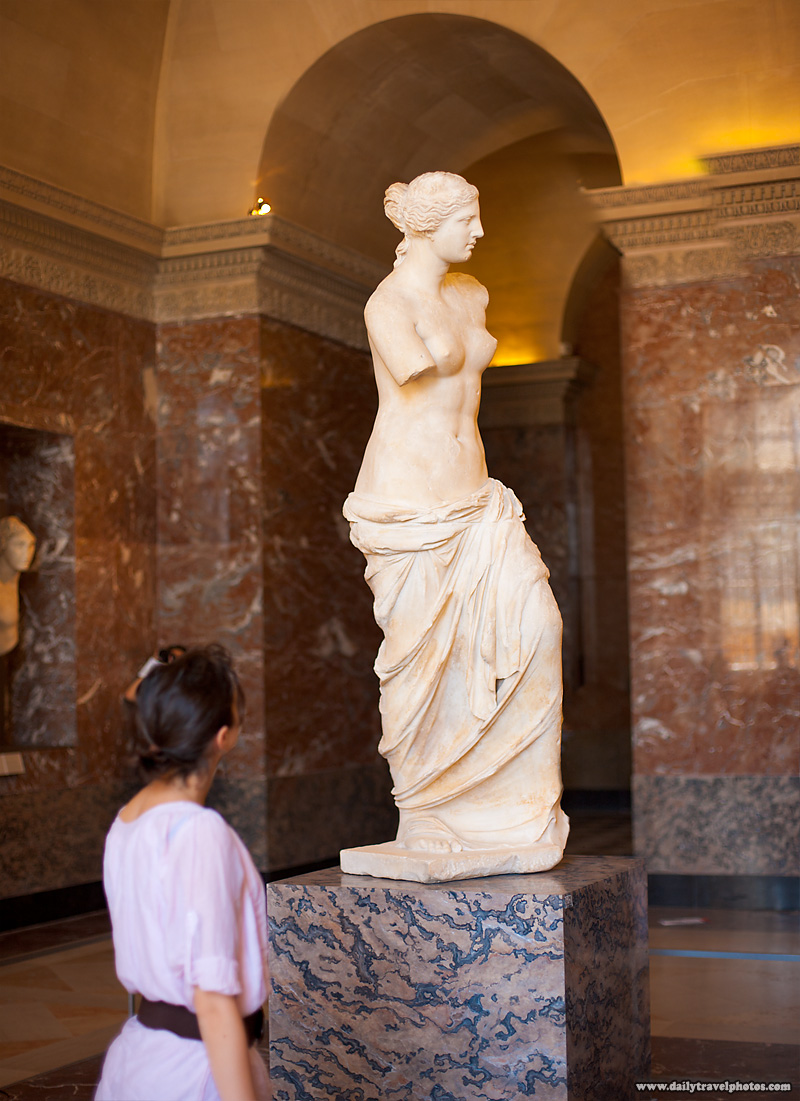
Tête de la Vénus de Milo, étude d'après le plâtre LeMoine, Edmond Collections MNBAQ
In a large Dutch oven over medium heat, brown the beef until no longer pink. Once the beef is browned, drain off as much fat as possible. Add the soup mix, diced tomatoes, frozen vegetables, and beef broth. Bring to a boil, then reduce to a simmer for 10 minutes.

Modern 'Venus De Milo' Lucite Sculpture by Gabriele De Stefano, 31/160 For Sale at 1stDibs
Discover the Venus de Milo at the Louvre Museum, The Venus de Milo on exhibit at the LouvreEver since it was discovered on the island of Melos in the 19th century, the Venus de Milo has been considered to be one of the world's greatest masterpieces of sculpture.

Neil Barrett Artist Venus de Milo TShirt 'White' Venus de milo, Greek sculpture, Artist
Discovery Site of the discovery of the Venus de Milo Sketch of the Venus and two herms found with it by Olivier Voutier, made shortly after the discovery The Venus de Milo was discovered on 8 April 1820 by a Greek farmer on the island of Milos.

Vincent Milo Quality Assurance Specialist FedEx Ground LinkedIn
In this episode of Vox Almanac, Vox's Phil Edwards explores the secret history of the Venus de Milo, the famous armless statue from Greece. Found in 1820, the Venus de Milo was always considered.

Venus de Milo. Statue. Material 100 Ceramine. Color Ochre. Venus de milo, Rostros, Cuadros
Description and Iconography. Venus de Milo stands at around six and a half feet tall and is made of white marble. The sculpture portrays a female figure with a graceful and elegant pose. Her body, with its slightly curvaceous form, exudes a sense of timeless beauty. The drapery cascading down her waist and legs adds a sense of movement and flow.

Venus De Milo Wiki Official TMNT Amino
When was the Venus de Milo found? The ancient Venus de Milo sculpture is commonly thought to represent Aphrodite, though her identity - and lack of arms - still remain a mystery. But when was the marble Venus found? BBC History Revealed explains… Published: August 1, 2019 at 12:00 PM

Lone Shooter A lone tourist admires the Venus de Milo statue at the Louvre museum in Paris
Venus de Milo ( Between 150 and 125 BC) attributed to Alexandros of Antioch. 204 cm. Louvre Museum, Paris, France. Image source Nan Palmero (CC BY 2.0) Christopher P Jones is the author of What Great Artworks Say, an examination of some of art's most enthralling images. The Venus de Milo has the incongruous distinction of being one of the.

Venus de milo, Milo
Venus de Milo Vincent van Gogh (1853 - 1890), Paris, March-May 1886 chalk on paper, 47.6 cm x 31.5 cm Credits (obliged to state): Van Gogh Museum, Amsterdam (Vincent van Gogh Foundation) Object data. F-number F1371v. Object number d0402V1962v. Dimensions 47.6 cm x 31.5 cm. Provenance.

Milo Vincent Travailleur indépendant Indépendant LinkedIn
1. The discovery of the Venus de Milo. The Venus De Milo by Alexandros d'Antioche - Louvre. This statue has been discovered during the spring of the year 1820 in the city of Mélos (or Milo) located in the Cyclades, in Greece. It was discovered by a farmer, the man was looking to build a wall around his land and found a sort of crypt when.

Cours et Meilleur Prix Pièce Vénus de Milo 200 Euros
Article. The so-called Vénus de Milo is perhaps one of the most iconic works of Western art of any period. The statue of the goddess was found on the Aegean island of Milos, to which she owes her name, on the eve of the Greek War of Independence (1821-1830 CE). With her delicate face and elegant curves, she is a vision of grace and beauty.

Vincent van Gogh. Venus De Milo Venus de milo, Vincent van gogh, Van gogh
One of the most famous examples of ancient Greek sculpture, the Venus de Milo is immediately recognizable by its missing arms and popularly believed to represent Aphrodite, the Greek goddess of.

Vincent Milo, 71
Reimagining Venus de Milo in the Modern Age. At the Louvre, the illustrious Venus de Milo stands in a prime area of the gallery. She overlooks visitors at 6 foot 8 inches of Parian marble. First discovered on the Greek island Milos in 1820, the sculpture depicts the goddess Venus with a bare torso and flowy drapery along her bottom half.

Milo Ventimiglia on Twitter
The statue was found by a Greek farmer called Yorgos Kentrotas in April 1820 on the Greek island of Milos (also known as Melos) in the Aegean Sea. Venus de Milo was discovered in 1820 CE by French naval ensign Olivier Voutier and a local Greek peasant named Yorgos Kentrotas. The discovery was made in the Greek village of Trypiti on the island.

MILO ACTIVGO DE 2,5 KG
The Venus de Milo left the Louvre soon after the war declaration, spending the war hidden away. Venus returned to the Louvre in 1945, but it wasn't to be her last travel. The Venus De Milo Visited Japan. Mona Lisa visited Washington and New York in 1963, while the Venus de Milo sailed for Japan. In 1964, 1.7 million Japanese visitors came to.

Artist Reimagines Famous Artwork from the Past as Exquisite Hyperrealistic Portraits Portrait
USA v. Vincent Milo, Jr., No. 07-12783 (11th Cir. 2008) case opinion from the U.S. Court of Appeals for the Eleventh Circuit

Venus De Milo Statue with Cut Skin and Mandarins Stock Illustration Illustration of milo
Known also as the Aphrodite of Milos, the Venus de Milo is a marble sculpture that was likely created by Alexandros of Antioch (2nd - 1st century BCE)-a Greek sculptor from the Hellenistic period —during the late 2nd century BCE. It features a nearly nude, larger-than-life (6 feet, 8 inches tall) female figure posed in a classical S-curve.